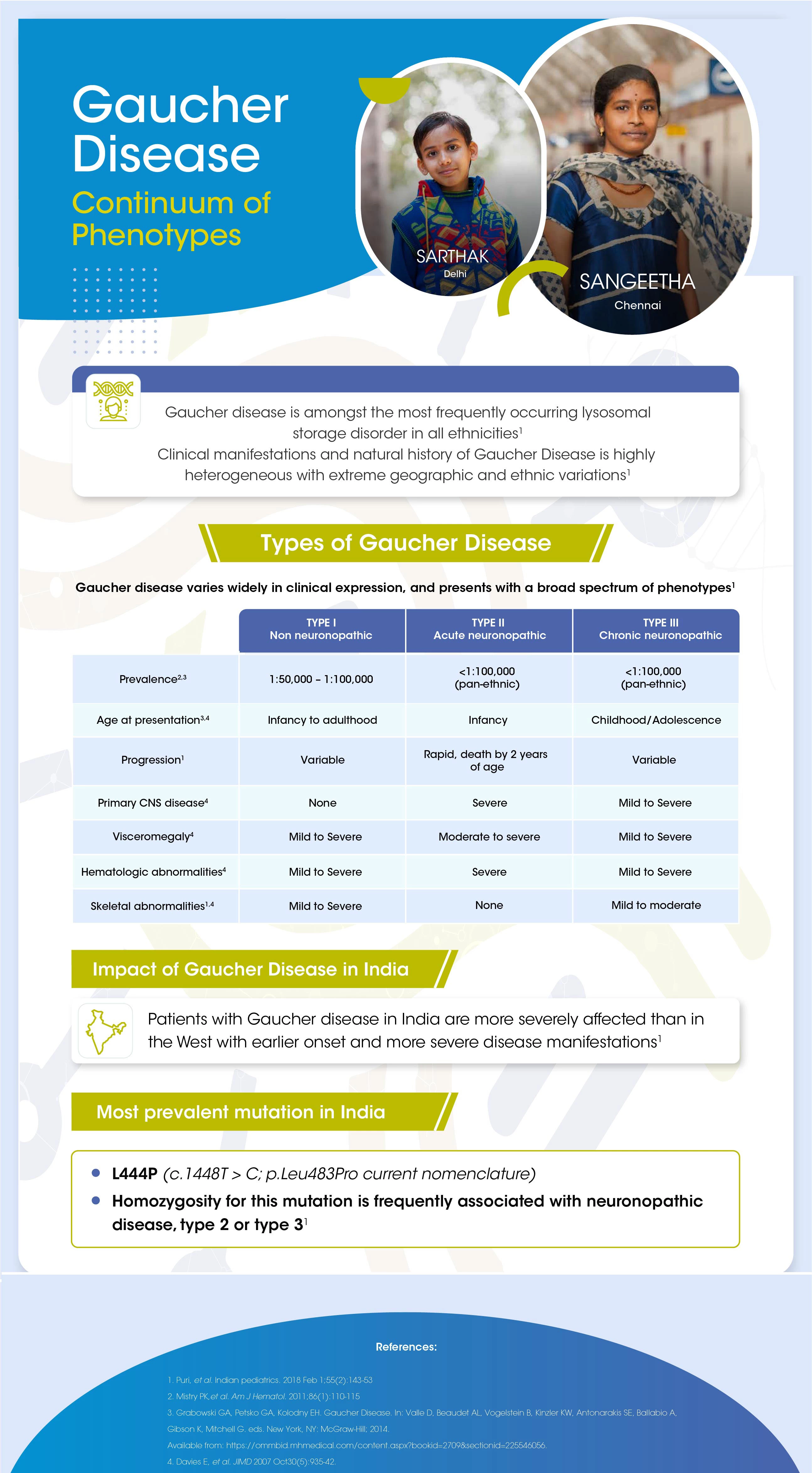Gaucher disease - continuum of phenotype

Gaucher disease is among the most frequently occurring lysosomal storage disorders in all ethnicities. Clinical manifestations and the natural history of Gaucher disease are highly heterogeneous, with extreme geographic and ethnic variations. It also varies greatly in clinical manifestation and manifests with a wide range of phenotypes. Gaucher disease is classified into three types: non-neuronopathic (Type 1), acutely neuronopathic (Type 2), and chronically neuronopathic (Type 3). Type 1 non-neuronopathic diseases are the most common, with onset occurring between infancy and adulthood. Whereas the other two types, are less prevalent and begin usually in infancy or adolescence. The progression of the disease is variable in Type 1 and Type 3, unlike Type 2 which is rapid and progressive. Other variable factors are visceromegaly, hematologic abnormalities, and skeletal abnormalities, which range from mild to moderate. It is observed that patients with Gaucher disease in India are more severely affected than those in the West, with an earlier onset and more severe disease manifestations. The most prevalent mutation observed in India is L444P and Homozygosity for this mutation is frequently associated with neuronopathic disease, type 2 or type 3.




